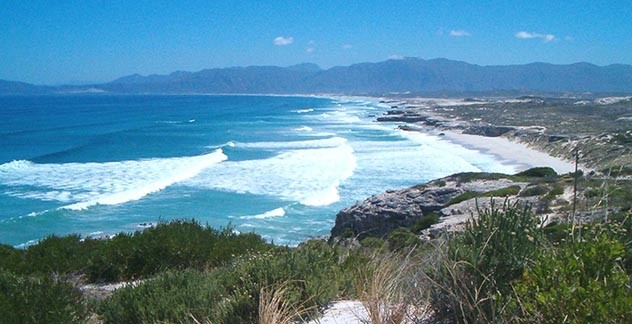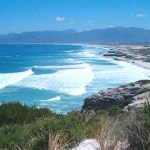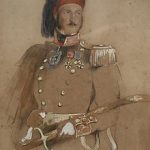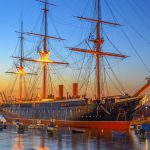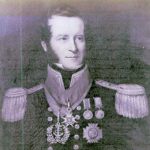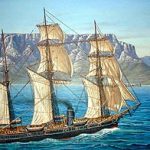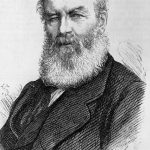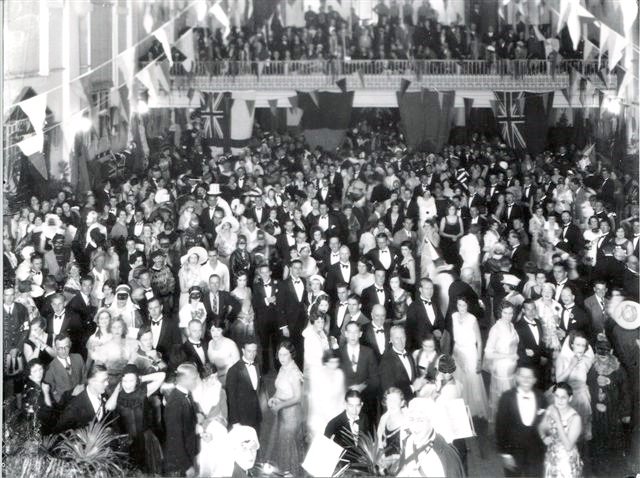
The Golden Age of the Diamond City: Social Life in Kimberley: 1871–1920
November 7, 2016Uncovering the past of Grotto Beach
January 30, 2017In earlier books on the history of Hermanus (Tredgold, Burman and du Toit) reference is made to a certain “Walker”, a ‘surveyor’ in the Royal Navy, as being the person after whom Walker Bay is named. This could make some sense since someone named Walker could have been employed to survey this portion of the South African coast and there is evidence that coastal features were sometimes named after the surveyor.
However, subsequent research has failed to identify which surveyor is referred to and, in any event, it seems unlikely that a mere surveyor would have such a large and important bay named after him. This was usually reserved for Admirals. Admiral Pringle, after whom Pringle Bay is named is a case in point – and Admiral Gordon for Gordon’s Bay. Richards Bay is also named after an Admiral – in this case Admiral Sir Frederick Richards.
In 2014 I heard of a second candidate for the name of Walker Bay, through research carried out by Blake Albert, then a member of the Hermanus History Society, and presented by him to members at one of the monthly meetings. However, to my knowledge the research needed to confirm this possibility was never carried to a conclusion. Recently I have been able to look more closely at the available information and am convinced that the mystery has been solved. I have been substantially assisted in this by a thesis authored by Matthew Chiswell at the University of Cape Town. (1)
The Walker after whom Walker Bay is named is almost certainly Admiral Sir Baldwin Wake Walker (1802-1876). He joined the Royal Navy in 1812 (yes, he was 10 years old) and served inter alia in Jamaica, West Africa and the Crimea. For two years he served in the Turkish Navy, representing the Royal Navy on a clandestine project, during which he dressed the part (see image). But that is a story for another time.
The first period of his career that is of interest to us, was from 1848-1860, when he was “Surveyor” of the entire Royal Navy, based at Portsmouth in Britain. This position had nothing to do with conducting surveys by land or by sea. The term ‘surveyor’ in this context is one which dates from Elizabethan times and is described by an expert as follows:
The Surveyor of the Navy was an officer in the Royal Navy who was a member of the Navy Board from the inauguration of that body, and held overall responsibility for the design of British warships. From 1845 design responsibility was centred in the Surveyor’s office. In 1859 the post of Surveyor of the Navy was changed to Controller of the Navy. (My emphasis). As Controller of the Royal Navy Walker was hugely influential in the design and construction of all Royal Navy warships and he is credited with persuading the Admiralty to convert the materials used in building battleships from wooden hulls and sails to ironclad hulls and steam power. The first of these battleships, HMS Warrior, was constructed under his personal supervision. This remarkable vessel served the Navy in various capacities from 1858 to 1971, after which she was fully restored and now serves as a Museum Ship at Portsmouth. Robin Richards, a resident of Hermanus encountered the Warrior “when she was a hulk being used as an oiling jetty at Pembroke Dock. I was midshipman in a fleet minesweeper at the time and we tied up alongside her to refuel. I remember gingerly descending down greasy iron ladders into the bowels of the ship, the lower decks of which were flooded with oily sea water. She was built before steel was readily available. Wrought iron and cast iron are resistant to corrosion and this combined with the oil helped to preserve her.”
By the time Walker came to the Cape, he had been granted a baronetcy and earned the following decorations: Legion d’Honneur (France); Order of the Redeemer (Greece); Order of the Crown (Austria) and Order of the Red Eagle (Russia).
In 1861, following immediately on his tenure as Controller of the Royal Navy, Walker was promoted to Commander-in-Chief of the Cape of Good Hope and West Coast of Africa Station of the Royal Navy, and served in Cape Town from 1861 until 1864. During his posting at the Cape Walker was mainly involved in suppressing the slave trade from West and East Africa. He had a fine record in this regard- though that is also a story for another time.
He also continued his interest in naval technology from his days as Controller of the Royal Navy and brought about several improvements in the ships that were assigned to his Squadron. There exists voluminous correspondence between him and various Admirals in Britain about the superiority of iron-hulled ships. In his thesis Matthew Chiswell states:
During his residence at the Cape, Baldwin Walker undertook to modernise and improve the facilities at the Simonstown dockyard. To this end he procured a portable steam crane for use in the dockyard which enabled the process of loading and unloading vessels to be accomplished faster and with less manpower.
Possibly the most significant episode of his command at the Cape concerned the American Confederate vessel the famous Alabama. The ship under Captain Semmes had to put into Simons Town for refit and supplies and Walker personally controlled its visit. Record exists of at least three social occasions organised by Walker in August 1863, involving the Captain and officers of the Alabama.
Walker was involved in two other events of interest. The missionary and explorer David Livingstone was undertaking his famous expeditions in the early 1860s and the Cape Squadron under Walker was given the task of ensuring the delivery of supplies to points along the east coast where Livingstone required them.
In another duty, the Squadron was sent to defuse conflict around a guano island called Ichaboe, situated 480 miles north of Cape Town on the west coast. Two rival companies were fighting a small war there for access to the valuable material. Walker asserted British government sovereignty over the island and settled the dispute.
Walker was also responsible for the construction of a new lighthouse on a site known as Roman Rock in False Bay near Simonstown. The lighthouse exists to this day.
Walker married Mary Sinclair Worth in 1834 and, despite his long absences at sea the couple produced 11 children. He retired in 1870 and lived for another six years, dying on 12 February 1876 at his house in Norfolk.
He was succeeded as Baronet by his eldest son Admiral Sir Baldwin Wake Walker (1846–1905), while his grandson Admiral Sir Frederic Wake-Walker (1883-1945) served in both World Wars, playing a leading role in the evacuation of Dunkirk and in the hunt for the German battleship Bismarck in World War II.
In my opinion it is almost certain that Walker Bay is named for Admiral Sir Baldwin Wake-Walker and that this information should be used when telling the world about the Overstrand and in publicity and marketing activities, as it confers dignity and another historic connection to the area. In the meantime I will be trying to find an actual documented record supporting this conclusion.
Note (1): The Cape Squadron, Admiral Baldwin Walker and the Suppression of the Slave Trade: Department of Historical Studies, University of Cape Town, 2003

